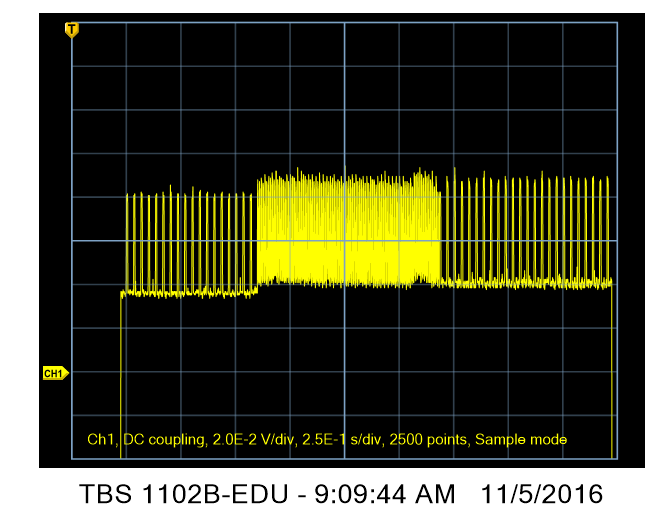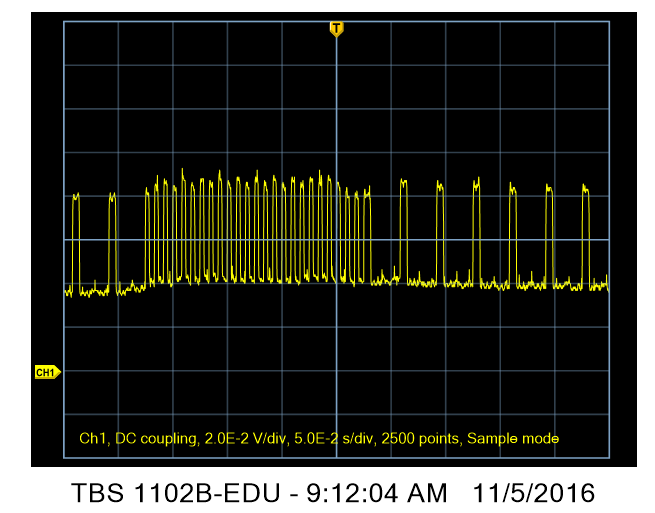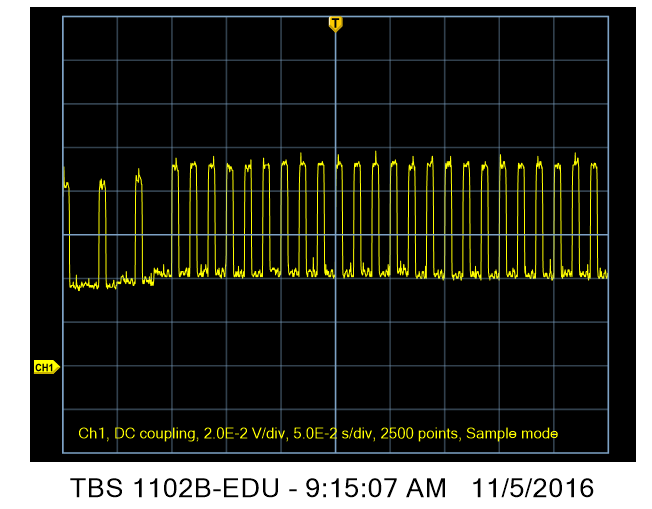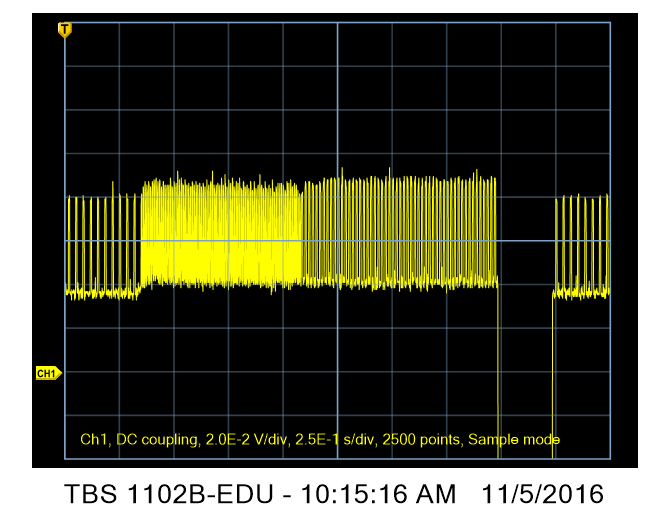This is a continuation in a series of posts on power consumption in the Sony a7RII. The more recent incarnation of the series starts here.
Using the methods that I developed over the last few days, I took a look at the Sony a7RII battery current draw when autofocus (AF) is used. I mounted a Sony 70-200/4 OSS zoom on the camera, and set the switch on the barrel to AF. The I looked at the current flow as the camera was acquiring focus:
The vertical axis is current. Zero is marked by the yellow icon labeled CH1. The horizontal time base is 250 miliseconds per division. The camera’s display was set to LCD, and the AF mode to single shot. At a little after the third division, I half=pressed the shutter release, and left it that way until the trace completed.
You can see that the minimum current draw increases as soon as the shutter release is depressed. The period of the regular variation in current gets much faster, too. Then, after focus is acquired, the current variation drops back to normal, even though the shutter release remains depressed. There are variations in the average current level during the time that focus is being acquired, with the largest one occurring right at the end of the focus-acquisition period.
Let’s speed up the image base to 50 msec per division and take a look:
The current variation is four times the rate when the shutter button is not depressed, and also four times the rate when the camera thinks it has acquired focus. I have speculated in the last few days, and still continue to believe, that this variation in current is related to reading live-view data from the sensor and refreshing the display. The highest frequency of the variation I’ve seen up to now is 60 cycles per second. Now, with AF active, we are seeing 120 cycles per second. I speculate that the camera is reading data out of the sensor faster in order to speed up AF acquisition. If I’m right, it looks like AF consumes battery power, but the long pole in the tent is the reading of data off the sensor, not driving the motor in the lens (and I picked the lens for the test because it probably has the biggest motor of all hte Sony E-mount lenses I can get my hands on).
As a control, let’s look at what happens when you half-press the shutter with the switch on the lens set to MF:
That’s the 60 Hz periodicity that we’ve seen before.
What do you think happens with the camera in AF-C mode? I thought it would stay at the 120 Hz sample rate, but I was wrong:
It starts out at 30 Hz, goes to 120 Hz when the shutter button is depressed, then drops to 60 Hz as long as the shutter button stays down. I guess the Sony engineers thought that leaving it at 120 Hz all the time the shutter button is down would be too hard on the battery life.
This camera is full of surprises.




After my Canon 7D I’ve been kind of surprised with my Sony A7RII battery life. It becomes really disturbing during video shootings.
To solve this problem I’ve bought a dummy battery for video shootings. So, I can use an external battery. And here is how I’ve found the possible reason why an NP-FW50 battery discharges so fast.
I have a voltmeter on my external battery. The battery is made of 2 li-pol 5000mAh elements 3.7V each. When it is fully charged the voltage is about 8.4V. The camera shows 100%. This elements can be discharged up to 6V. So 6V has to be 0%. But the camera shows an out of battery icon when the voltage is about 7.2V. It seems that A7 doesn’t use the full capacity of the NP-FW50 battery and turns it off much earlier somewhere at 50% of it’s real capacity while it can’t turn off the dummy it can still work when the voltage is lower than 7.2V